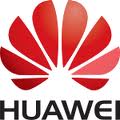![]() It was interesting to see how things have changed in last 4-5 years. When BusinessWeek ran this hugely popular post in 2005, blogs were started getting enough attention globally. We had some of the finest minds in blog world, like Robert Scoble writing on technology evangelism, first for Microsoft and then for RackSpace. Then how can we miss Dave Winer, who created the idea of weblogs. But despite getting initial momentum, many of us in Telecom fraternity will agree that, over the time, blogs have lost enough steam to be considered as a killer tool in marketing- at least in Telecom India the truth is nakedly vivid.
It was interesting to see how things have changed in last 4-5 years. When BusinessWeek ran this hugely popular post in 2005, blogs were started getting enough attention globally. We had some of the finest minds in blog world, like Robert Scoble writing on technology evangelism, first for Microsoft and then for RackSpace. Then how can we miss Dave Winer, who created the idea of weblogs. But despite getting initial momentum, many of us in Telecom fraternity will agree that, over the time, blogs have lost enough steam to be considered as a killer tool in marketing- at least in Telecom India the truth is nakedly vivid.
Recently, while I was following TataDoCoMo on Twitter happily, a curious thought came to my mind; let’s check how Internet savvy the Telecom Operators in India are. And to my disappointment, none of them (with exception of Tata DoCoMo overall & Vodafone-Essar on Facebook) are actively branding their products or brand with Web2.0 tools, such as Twitter, Facebook & Blogs. Why are telcos averse of using Web2.0 tools for promoting brand on Internet? What are the new avenues to interact with customers for them? Why are they relying too much on traditional marketing tools while ignoring the power of Web2.0 platform?
David Kline, a US expert on corporate intellectual property strategy, describes a brand in today’s blog-enabled world as “not something you buy so much as something you participate in”. In his analytical book Blog!, Kline divides the marketing approach of a corporate blog into a two stage process: mindshare, then walletshare. “First achieve thought leadership and credibility on the issues of most concern to potential customers.” This, he says, will then convert into sales. “Community first, then commerce.” But what is happening around is exactly opposite of it; building commerce first and community later. How long will this approach hold bastion to thrive? We have already seen enough fragmentation of telecom market, then why telcos aren’t concentrating on participatory marketing first before doing commerce?
Some interesting services, which came to my notice, while visiting the web pages of few Indian Telcos were DoCoMo’s ‘Saving Calculator’ and Reliance’s ‘Find Coverage in Your Area’. But then how do you communicate these services to your customers, existing as well as prospective? You will see the difference, if you could share it with all. And despite the fact that you have all Web2.0 tools in hand, very little had been exploited for real use. Even Airtel, India’s No.1 Telecom Operator, doesn’t recognize the power of Web2.0 branding? I felt, Airtel is the least Internet ready brand, with no presence on Twitter/Facebook and complete absence of Blogging profile. This is despite fact that it provides some of the best VAS, like Twitter updates through mobile sms or even promoting Telecom Innovation through ‘Innovation fund’. If you are curious enough to peep how some of top telcos are branding it on twitter, then see the twitter pages of Idea (Doesn’t look like an official account), Aircel & Airtel. Others like Vodafone-Essar & Relinace don’t even hold profiles. Same is true for Facebook pages, where DoCoMo scores high enough followed by Vodafone-Essar. Coming to social bookmarks & email subscription, Tata-DoCoMo again scores high against all other telecom brand in India. Perhaps, that makes me say; Tata-DoCoMo is the most Internet Ready Telecom Brand among all Telecom Operators in India.
When you look on global scale, the same applies for global players. No one has quite understood the power of blogs, like Google or Amazon have. The following peace from ‘Global Telecom Business’ will explain the picture clearly:
Verizon takes the lead, with its Social Media site, containing five regularly updated blogs. The company also has a wide presence on Twitter, Facebook and YouTube. Its blogs contain a great deal of industry information, as well as productivity expertise for using its products and services, for its business clients. AT&T by contrast clearly sees blogging purely as a consumer tool. Its sole blog is called Calm, cool and collected, and has the tagline ‘brought to you by AT&T and some of its real moms (and dads)’. And that’s pretty much it. For instance, while Vodafone, Telefónica O2 and Deutsche Telekom/T-Mobile all make use of Twitter and Facebook, they all lack any sort of blogging presence.
But why are they not branding through blogs? As rightly said, social networking, which for most businesses primarily means Twitter, Facebook, YouTube and MySpace, works well alongside blogging, especially for promoting blogs, but isn’t a substitute for it. Can we re-make blogs as mainstream tool for branding & marketing in telecom?
Answer lies in reluctance of accepting new ideas on e-marketing. Power of blogs lies in its ability to constantly update subscribers of new developments. Blogs are ever refreshing and constantly updated. But then who has time to update and read it frequently? Should we be using blogs for ‘Commercial Promotion (Commercial Pollution)‘? Are the businesses enough passionate about the subject of ‘Participatory marketing’? If you know answers of these, you have understood the power of blogs in establishing it as mainstream tool in marketing & branding. I have even seen, some of TV commercials of DoCoMo, being devised by subscribers. That’s exactly the way Telecom 2.0 will shape in coming years. Participatory marketing is the keyword of next decade and you have to adapt to choices of consumers fast.
But as I said, blogs are little understood and vastly misunderstood. We could often think of promoting different schemes via blogs, but never understand it as medium to establish a rapport with customers. Let’s not pollute the ideas of blogging for commercial branding only, but as a tool to interact with customer in very ideas of ‘Participatory Marketing’. Telefónica O2 has recently shown us the way, as said in ‘Global Telecom Business’:
In the telecommunications marketplace, perhaps the award for bravery should go to Telefónica O2.It’s gone one step further than allowing employees freedom to comment on the company; it is handing over control of its marketing to its customers. In November 2009 it launched a subsidiary called Giff Gaff, which calls itself the people-powered network. Like Blyk — which ceased its MVNO operations in mid-2009, preferring to license its ideas to existing operators — the network is relying on “buzz” from its customers, otherwise called referrals, to bring in new customers
The Arena is still open for experiments!





